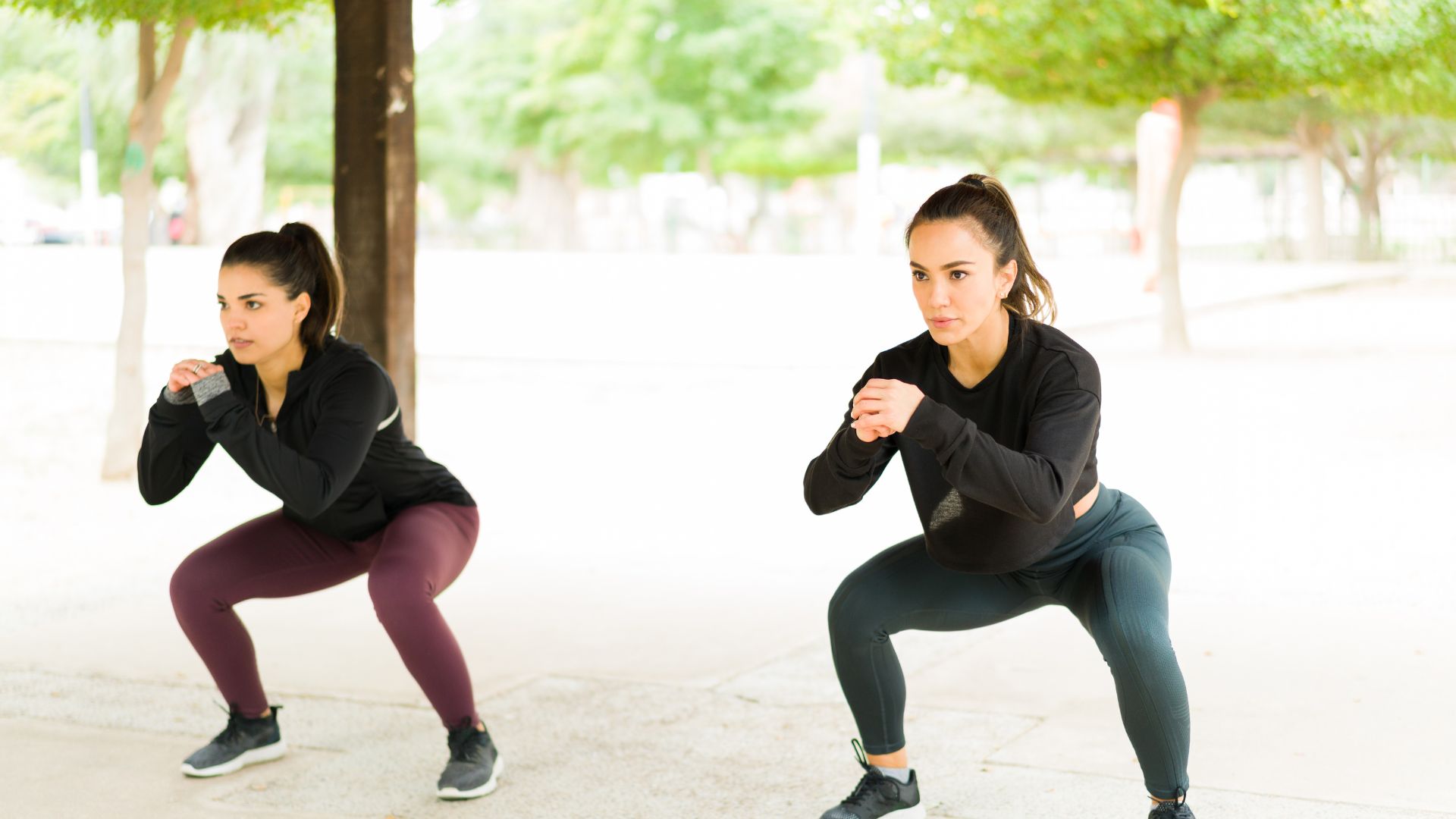Transform Your Fitness Journey with High-Intensity Interval Training (HIIT)


Transform Your Fitness Journey with High-Intensity Interval Training (HIIT)

Desmond Croker RN, Dip. OHS, BSN, MSN, CCDE
April 29 2023
It's common to feel frustrated after dedicating countless hours in the gym, only to see minimal results from your traditional workouts. For many, the desired body transformation remains elusive, no matter how much time is spent on the treadmill or lifting weights.
Fortunately, a solution has fitness enthusiasts buzzing worldwide: High-Intensity Interval Training (HIIT).
This innovative approach to exercise helps you achieve visible progress in less time, revolutionizing how you approach your fitness journey. Say goodbye to monotonous, time-consuming routines and embrace the power of HIIT, where maximum effort meets efficient workouts for optimal results.
HIIT is a specific training technique that involves giving everything you have during short but intense bursts of exercise, alternating with short and active recovery periods.
This training raises and keeps the heart rate up while burning deep into your fat deposits in less time. Research shows that HIIT can help you shred body fat, stay lean, and improve endurance while adding more muscle mass.
But HIIT is not just about pushing yourself to the limit during each burst of activity. The recovery periods in between are just as important. They allow your body to prepare for the next round; without them, you won't be able to push yourself to the limit during the next burst.
Some recent Findings
Researchers have been exploring the potential benefits of shorter variations of High-Intensity Interval Training (HIIT), which involve as little as 4 minutes of high-intensity exercise per session (excluding warm-up and cool-down).
A new review paper published in the Journal of Physiology examines a decade's research on low-volume HIIT for health, aiming to understand its effectiveness compared to standard exercise guidelines.
The current World Health Organization (WHO) physical activity guidelines, which recommend 150-300 minutes of moderate activity per week or 75-100 minutes of vigorous activity per week, may be challenging for many individuals due to time constraints from family or work commitments.
This issue is further highlighted by the increasing rates of physical inactivity among adults in high-income countries.
The study's findings reveal that low-volume HIIT, typically involving less than 20 minutes of total exercise time (including warm-up and cool-down), yields improvements in health comparable to interventions that meet the current guidelines.
This is a significant discovery, as it suggests that low-volume HIIT can be an effective and time-efficient alternative for those who struggle to adhere to traditional exercise recommendations. By offering comparable health benefits in a shorter amount of time, low-volume HIIT may help address the issue of physical inactivity and make it easier for individuals to integrate regular exercise into their busy lives.
The science behind HIIT is all about inducing overload. By strenuous exercise, the body fatigues more significantly, and super-compensation can occur when supported by significant recovery. This leads to physiological adaptations that result in increased performance above the baseline.
Physiology of HIIT
HIIT workouts come in various forms, allowing for a highly adaptable exercise routine. The main types of HIIT workouts include Cardio HIIT, HIIT with weights, Bodyweight HIIT, and Full body HIIT.
These workouts involve short bursts of intense activity at 70-90% capacity, followed by a longer rest period. Cardio HIIT examples include hill sprints, rower sprints, assault bikes, and skiers.
HIIT with weights involves squat thrusters, clean and press, kettlebell swings, power press, snatches, deadlift & row, and med ball slams. Bodyweight HIIT examples include push-ups, burpees, jumping jacks, high knees, squat jumps, mountain climbers, tuck jumps, lunge jumps, box jumps, and ice skaters.
To achieve a full-body HIIT workout, combine exercises into circuits or use supersets, pairing different exercises back-to-back. You can also join a local HIIT class for inspiration and motivation.
Remember to maintain good form and proper technique while maximizing intensity during the workout.
The afterburn effect, also known as EPOC, helps you burn more calories after finishing your workout. During recovery, energy resources must be replenished, blood must be re-oxygenated, and circulatory hormones must be restored.
All these physiological reactions require oxygen, so EPOC experiences an increase in calories post-exercise compared to pre-exercise.
According to research, HIIT is the most effective means to trigger the EPOC effect. This is because when you perform your exercises at a higher intensity and demand immediate energy, anaerobic pathways provide the needed ATP much faster.
This is also the reason why high-intensity activity can only be maintained for a brief period.
But HIIT is not for everyone. People who want to take on HIIT should be willing to try out several different exercises and be knowledgeable about performing these moves correctly and safely.
It would be best if you were in good health with an elementary level of general and core strength and mobility. You also need to be aware of your personal physical limitations.
If you're above the age of 55, then it is recommended that you take on HIIT with a doctor's approval. Likewise, anyone suffering from orthopedic limitations such as knee, back, or shoulder conditions or cardiovascular issues like hypertension and heart palpitations should not exercise such an aggressive form.

Beginner Friendly HIIT
Here's a beginner-friendly HIIT workout that can be performed at home with just an exercise mat and a timer or clock. Start with a 5-minute warm-up of walking or marching in place and conclude the workout with a 5-10-minute cool-down and stretching session.
The workout includes a series of exercises, each performed for 30 seconds, followed by 15 seconds of slow marches in place for recovery.
The exercises might consist of side lunges, squats (or jump squats for higher intensity), push-ups (with modifications available), jumping jacks (or modified version), triceps dips using a sturdy chair or bed, alternating high knees (or jogging high knees for higher intensity), and sit-ups (with modifications available).
Adjust the speed of each exercise according to your fitness level, aiming to work at your maximum capacity. Rest for 60 seconds after completing the circuit and repeat the session twice for a complete workout.
Bottom Line
High-Intensity Interval Training (HIIT) is a game-changer for anyone seeking a more efficient and effective way to achieve their fitness goals. By incorporating HIIT into your workout routine, you can not only save time but also experience significant improvements in your overall health and physique.
So, are you ready to take on HIIT? With the right approach and knowledge, HIIT can transform your body in just a few short weeks. And who doesn't want to look and feel their best?
So, get started today, and you'll be amazed at the results you can achieve in less time than you ever thought possible.
- Muhammed Mustafa Atakan, Yanchun Li, Şükran Nazan Koşar, Hüseyin Hüsrev Turnagöl, and Xu Yan. Evidence-Based Effects of High-Intensity Interval Training on Exercise Capacity and Health: A Review with Historical Perspective.
- The Physiological Society. "Keeping fit with HIIT really does work: Short bursts of activity you can easily do at home keep your fitness up." ScienceDaily. ScienceDaily, 15 April 2021. <www.sciencedaily.com/releases/2021/04/210415114101.htm>.
Most Popular Articles
10 Stress-Reducing Foods You Should Be Eating Right Now
The Power of Prevention: The Benefits of Natural Supplements for Women's Heart Health
The Importance of Diabetes Education and Counseling for people with Diabetes and chronic diseases
The Untold Secrets to Optimal Health: Transform Your Lifestyle Everyday
Unlock Maximum HIIT Performance with these expert-recommended Supplements
Managing Stress: Simple and Natural Ways to Reduce Stress Levels and activate your superpower
6 simple tips for sticking with physical activity in diabetes management
The Benefits of Intermittent Fasting in Diabetes: A Closer Look, by a Diabetes Expert
Combatting age-related Cognitive Decline: Tips to Enhance Memory
The most overlooked risk factors for diabetes - By a Diabetes expert after 12 years of experience
Start your free trial
Sign up to get 10% off your next subscription
Most Popular Articles
10 Stress-Reducing Foods You Should Be Eating Right Now
The Power of Prevention: The Benefits of Natural Supplements for Women's Heart Health
The Importance of Diabetes Education and Counseling for people with Diabetes and chronic diseases
The Untold Secrets to Optimal Health: Transform Your Lifestyle Everyday
Unlock Maximum HIIT Performance with these expert-recommended Supplements
Managing Stress: Simple and Natural Ways to Reduce Stress Levels and activate your superpower
6 simple tips for sticking with physical activity in diabetes management
The Benefits of Intermittent Fasting in Diabetes: A Closer Look, by a Diabetes Expert
Combatting age-related Cognitive Decline: Tips to Enhance Memory
The most overlooked risk factors for diabetes - By a Diabetes expert after 12 years of experience
Recommended Posts
This site uses cookies. By using this site, you agree to our Privacy Policy and our Terms & Conditions
-480x320.jpg)
-3-480x320.jpg)

-480x320.jpg)
-1-480x320.jpg)
-480x320.jpg)
-2-480x320.jpg)
-480x320.jpg)
-480x320.jpg)
-1-480x320.jpg)